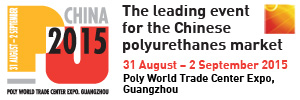Also, download this story from the electronic issue here
In Asia, the increasing heaps of waste plastics outshine the usefulness of plastics. As a solution, recycling is regarded as the most effective form of making use of waste plastics, yet, growth in this mode is still moderate, says Angelica Buan in this report.
Plastics litter piling up from Asia
The false image painted of plastics being a nuisance and responsible for clogged water ways, marine litter and climate change, may take a toll on the industry’s growth, according to speakers at the Asia Plastics Forum held during the Plastindia show in February at Gandhinagar, Gujarat.
Industry delegates during the conference observed that, especially in packaging, the increasing volume of plastic wastes is the negative payback for using too much of plastics. The issues ranging from marine litter to mismanaged landfills have spurred measures like plastic bag bans, which, consequently, affect the industry. As demand surges for plastic packaging, more waste management issues are created. A highly-publicised issue, marine litter, has been trending lately in the plastics sector.
A new study published in the Science journal, finds that the massive bulk of plastic garbage that litter the oceans comes from Asian countries and China. The latter’s heavy coastal population has been estimated to contribute 1.3 million to 3.5 million tonnes of plastics waste/year.
Eight countries in Asia are also found to be top contributors to the 8 million tonnes of waste plastics produced. These include Indonesia, Philippines, Vietnam, Sri Lanka, Thailand, Malaysia and Bangladesh. The amount is projected to increase ten times by 2025, without inadequate waste management systems.
The study suggests that insufficient infrastructure for waste management and disposal could not cut back the stream of wastes being generated.
Even the US, which has a well-developed infrastructure for handling solid waste, still contributes 40,000 to 110,000 tonnes/year of waste.
The study drew its findings from waste plastics generated from coastal population areas using indirect methods to measure how much of the waste was not properly disposed of, and estimated the quantity of the waste that would end up in oceans.
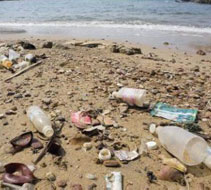
Recycling vs waste disposal
According to the United Nations Environment Programme (UNEP), in Southeast Asia, solid waste management is expensive and mainly involves collection and transportation, which are also labour-intensive areas. In many cases, the cost is passed on to the public sector. Already, privatisation (of waste management services) is practiced in Singapore, Malaysia, Thailand, Philippines and Indonesia.
Waste plastics also constitute waste from the raw materials that are used to produce end-products. About 4% of the global oil production is used as feedstock to produce plastics and a further 3-4% is utilised to provide energy for their manufacture.
Sustainable consumption and production of plastics to minimise the use of virgin materials and green gasses emissions, while delivering clean material cycles, are current practices, according to a report from Austria-based International Solid Waste Association (ISWA).
In a paper published by UK’s national academy of science, The Royal Society, in 2009, it said that the current applications for plastics in disposable products or in durable polymer-based items that end up in landfills after end-of-life use, are not sustainable.
Recycling can reduce the impact of these unsustainable practices to the environment. It, thus, provides opportunities to reduce oil usage, carbon dioxide emissions and the quantities of waste requiring disposal.
Varying recycling rates for Asian countries
Several Asian countries are continuously improving their recycling rates. China has had a steady increase of domestic collection and utilisation of plastic scrap, pegged to have reached 30% in 2013, according to the Plastics Recycling Committee (PRC) of the China Plastics Processing Industry Association. The association also cited that within the Chinese plastics recycling industry, more than 40% of the total volume is managed by medium-sized or large companies that are mostly located in the coastal regions.
The country has also paved the way for other novel means of repurposing plastics. For example, in the capital city of Beijing, recyclable plastic bottles can be exchanged for subway credit, usually between US$0.05 and US$0.15 cents.
The city government and recycling firm Incom have recently installed more PET bottle-to-subway credit reverse vending machines in rapid transit stations across Beijing, after the scheme gained a large following since its launch in 2012.
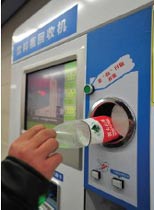
The machine, with its built-in scanners, detects the type and weight of the plastic to determine its value. The bottles are also crushed and sorted by colour and type by the machine.
Meanwhile, in Hong Kong, a newly launched recycled PET bottle has received recommendation from US-based Ocean Recovery Alliance (ORA), a non-profit organisation. Watsons Water, a leading manufacturer of pure distilled water in Asia, has turned to rPET bottles for its product.
Claimed as the first in Asia to be made of 100% rPET, the new bottle will create a positive impact on sustainability in packaging and promotion of the circular economy whereby materials and products are designed for recycling, according to Douglas Woodring, founder of ORA.
The rPET also represents a significantly improved technology for production from recycled PET, which can also enable producing larger volumes of the bottles. The technology used allows an extensive process of selection, crushing, washing and drying to produce pure, rPET, say the suppliers.
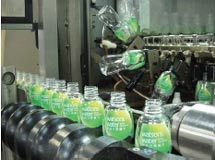
India, which is forecast by the Asian Development Bank (ADB) to likely outpace China’s economic growth this year to 2016, may also face environmental mayhem as a result of its industrial growth.
Data from the World Bank indicate that while highincome countries generally produce more waste per capita than low-income ones, India and parts of China are found to generate high volumes of rubbish.
In Mumbai, more than 450 g of material a day goes to the bin, accounting for more than 6% of the entire country’s waste. The nearby Deonar dumpsite is also amongst the largest of its kind in the world.
According to the study, on top marine polluting countries, India was cited as responsible for dumping an estimated 0.24 million tonnes of plastic every year; whereas the amount of mismanaged plastic waste per year amounts to approximately 0.6 million tonnes.
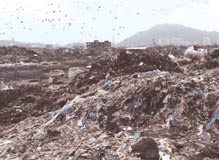
Honing into Southeast Asian countries
In Singapore, recycling waste is reported to have declined by 1% in 2014 from 61% rate a year ago, according to data from the National Environment Agency.
The country’s target of reaching a recycling rate of 70% by 2030 may fall short of expectation with the reported drop, quoted to be the first time in 15 years.
On the other hand, Thailand shows an uptrend in its recycling rates, according to analysis from Bangkok-headquartered Kasikorn Research Centre. In 2013, Thailand recycled over 0.8 million tonnes of plastic scrap, increasing 48.8% over 2012 when only 0.5 million tonnes was recycled. The value of resin from recycled plastic in Thailand may reach THB23.56 billion in 2014, up 14.7% year-on-year.
Moreover, the presence of large local and international recycling operators, who are highly-experienced in the field, particularly in sorting waste, is pushing up recycling rates.
Hence, the research projects that the proportion of plastic waste going into the recycling process will jump to 40% this year from 37.9% in 2014. Also this year, the market for resin from recycled plastic is expected to grow to nearly 23% year-on-year to almost THB30 billion.
Recyclable waste trade opportunity – China biggest
The scale of recycling may vary from country to country, sometimes, regardless of the adequacy of recycling systems. Since recycling, a mode of waste management is still capital and labour-intensive, this affects how the waste is handled. In this context, globalised trade in waste plastics is becoming a favoured option.
According to ISWA, recycling operations for traded recyclable wastes are being shifted to Asia, accounting for 40% by weight of total world production, with China being the largest single country accounting for 24%. ISWA suggests that the drivers were “increasing local demand and lower costs on labour as well as environmental and health and safety costs, due to the initial absence of regulations and/or their implementation in both manufacturing and reprocessing.” Most of plastic waste exports (by weight) from Europe go to China and Hong Kong, it said.
Recycled plastic trade is a lucrative business. The market for waste is now worth an estimated US$443 billion, according to an article published by the University of Bologna, School of Economics, Management and Statistics.
Leading the league for used plastics import is China, which ISWA said needs affordable secondary plastics to meet the increased demand for plastic products, which are partly coming from local recycling, and partly from the international market.
However, the locally recycled plastics are found to be mostly inferior and not suitable for use in larger, more advanced manufacturing facilities for export goods.
According to a paper by the Institute of Developing Economies Japan External Trade Organisation (JETRO), China began importing recyclable waste in the 1990s because of scarcity of locally sourced raw materials. The country then imported various recyclable waste to sustain its high economic growth, nevertheless it also has had issues of environmental pollution being generated by improper recycling.
Meanwhile, global economic integration is also driving the international trade of recyclable waste, including hazardous wastes. Transboundary movement of these wastes have yet to be looked into seriously and appropriate trade regulations should be adopted and enforced, according to JETRO.
(PRA)



